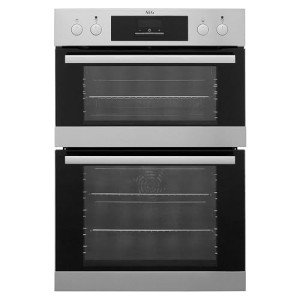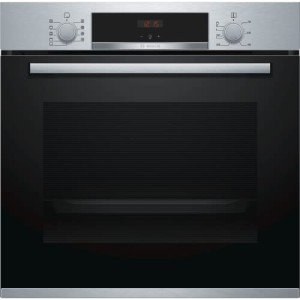Five Killer Quora Answers To Builtin Oven
페이지 정보

본문
The Comprehensive Guide to Built-In Ovens: Features, Benefits, and FAQs
Built-in ovens are a popular choice for contemporary cooking areas, providing versatility, efficiency, and a smooth style that integrates perfectly into cabinetry. This article will explore the numerous aspects of built-in built oven ovens, including their features, advantages, setup choices, upkeep ideas, and answers to commonly asked concerns.
What is a Built-In Oven?
A built-in oven is designed to be set up within kitchen cabinets and is available in various setups, such as single or double ovens. Unlike freestanding ovens, built-in designs provide a streamlined look and use more versatility in kitchen style. They come in electric, gas, and steam choices, catering to a range of cooking choices.
Functions of Built-In Ovens
Built-in ovens are packed with functions that boost cooking experiences. Here are some of the most typical functions to think about:
| Feature | Description |
|---|---|
| Self-Cleaning | Lots of models include a self-cleaning function that burns residue at heats, streamlining upkeep. |
| Convection Cooking | This feature uses a fan to flow hot air, cooking food more uniformly and rapidly. |
| Smart Technology | Some ovens come geared up with Wi-Fi connection, enabling users to manage the oven remotely by means of smart device. |
| Multiple Cooking Modes | Include options such as baking, broiling, Builtin Oven roasting, and air frying, offering adaptability for different meals. |
| Temperature Probe | Monitors the internal temperature level of food, ensuring completely prepared meals whenever. |
| Smooth Design Options | Available in numerous finishes (stainless-steel, black, white) to match kitchen decor. |
Benefits of Built-In Ovens
The setup of a built-in oven brings many benefits to any kitchen:
- Space Efficiency: Built-in ovens make the most of kitchen space, offering a clean and orderly look without sacrificing performance.
- Enhanced Cooking Performance: With sophisticated functions like convection cooking and exact temperature level controls, built in ovens uk-in ovens frequently exceed conventional models.
- Style Flexibility: These ovens can be set up at eye level, permitting simple access without bending down, which can be specifically advantageous for individuals with physical restrictions.
- Enhanced Resale Value: A well-designed kitchen with high-quality built-in appliances may interest potential buyers, improving general property value.
- Modification Options: Many brands use personalized designs that fit the specific measurements and aesthetic of specific cooking areas.
Setup Options
When choosing a built-in builtin oven; www.4mbs.net,, understanding the setup alternatives is vital. Here are the most common setups:
Single Built-In Oven: Ideal for smaller sized cooking areas, these units offer enough space to prepare a range of dishes simultaneously, best for everyday cooking.
Double Built-In Oven: Best suited for passionate cooks and large households, double ovens allow for simultaneous cooking at two various temperature levels, perfect for meals that need different cooking approaches.
Combination Steam and Oven: A hybrid solution that combines the advantages of traditional baking with steam cooking. This choice is outstanding for keeping moisture in foods, making it ideal for baking bread or roasting meats.
Upkeep Tips for Built-In Ovens
Maintaining a built-in oven is important for its durability and optimal efficiency. Here are some practical maintenance suggestions:
Regular Cleaning: Use the self-cleaning feature when necessary, and wipe down the exterior and interior surfaces routinely to prevent grease accumulation.
Examine the Seals: Inspect the oven door seals for any wear or damage to ensure correct insulation and cooking performance.
Temperature level Calibration: Occasionally check the temperature level accuracy utilizing an oven thermometer, particularly if cooking times appear longer than normal.
Ventilation: Ensure appropriate ventilation around the oven to avoid getting too hot, especially for built-in models that might be surrounded by cabinets.
Frequently Asked Questions About Built-In Ovens
1. Are built-in ovens more costly than freestanding models?Yes, built-in ovens tend to be more costly due to their style, setup requirements, and extra functions. Nevertheless, their benefits can justify the expense in the long run.
2. Can you install a built-in oven yourself?While some useful people may attempt to install a built-in oven, it is recommended to hire an expert to make sure proper setup, ventilation, and security standards.
3. What is the typical life-span of a built-in oven?The normal life expectancy of a built-in integrated oven and grill is around 10 to 15 years, depending on use and maintenance. Regular care can help extend its longevity.
4. Are built-in ovens energy efficient?Lots of contemporary built-in ovens are created with energy efficiency in mind, including functions like insulation and accurate temperature level controls that may reduce energy consumption compared to older designs.

5. Can a built-in oven be fixed if it breaks?Yes, built-in ovens can frequently be repaired. It is recommended to call a certified professional for medical diagnoses and builtin oven repairs to ensure safety and compliance with guarantee arrangements.
Built-in ovens are an outstanding addition to any modern kitchen, supplying a combination of design, performance, and advanced cooking features. With the best understanding about their functions, advantages, and upkeep, homeowners can make informed choices to improve their culinary experiences. As kitchen design trends continue to progress, the built-in oven remains a staple for those wanting to blend looks with performance in their cooking areas.

- 이전글Automatic Vacuum Cleaner And Mop Tools To Ease Your Everyday Lifethe Only Automatic Vacuum Cleaner And Mop Trick Every Individual Should Learn 25.05.19
- 다음글The future of Enhancement Removal In Astoria 25.05.19
댓글목록
등록된 댓글이 없습니다.



